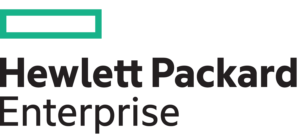In my 25 years in the telecommunication and collaboration industry and 15 years in healthcare technology, I am still amazed at the knowledge and ability of the executives and staff that defines, builds, and support the information flow within a healthcare institution. I am even more amazed at the knowledge and dedication of the executives and staff of Critical Access Hospitals (CAHs). This became evident again as I was invited to speak at the Illinois Critical Access Hospital Network (ICAHN) 2013 Technology Conference. The conference objective was to assist organizational senior leaders with a better understanding of different technical aspects of healthcare-related technologies for the purpose of helping leaders in their decision making opportunities.
I think I have a fairly good understanding of the technological workings within healthcare, but after hearing from the likes of; Todd Hart CIO ICAHN, Kim Larkin CIO of Washington County Hospital, Gretta McKelvey of Sarah D. Culbertson Memorial Hospital, and Tricia Ellison CFO of Perry Memorial Hospital, I learned a number of things, and have even more respect for the executives within the CAHs. Below are four pieces of information I learned, as well as one piece that I shared. After all, I was a presenter too!
The Decision Challenge Regarding State and Regional Health Exchanges
This discussion piqued my interest right away, as Kim Larkin from Washington County, talked about IHEs and the state and regional options that these hospitals are facing. The challenges and strengths of each were discussed and in the end the decision comes down to what the costs of connection and the cost per click, and more importantly the exchanges sustainability. Questions still needing answers; how many of the regionals will be around in 3-5 years, is the private option too much, is their value in the regional connectivity, what value will exist, and what does the MU2 version of the HIE look like?
Providers and Cognitive Dissonance
Clinic Operations Manager for Sarah D Culbertson Memorial Hospital, Gretta McKelvey, talked about change and implementing EMR. She discussed the challenges and benefits, and how she matches all aspects of the deployment to their mission statement (“to provide quality, compassionate care to the communities we serve.”) The most impactful piece of information I learned was the term “cognitive dissonance”. This is all about providers (docs), who don’t want to get on board with documenting from a keyboard and mouse versus writing everything in a chart. Is it about speed of input? Are they saving time and thus seeing more patients?
Tablets Are the Future
In my opinion, the presentation over lunch was the most exciting. The presentation was titled “Tablets: Preparing for the Post PC Revolution”. The talk was centered around change, and recognizing the need to adapt to new technologies. Todd Hart, CIO for the ICAHN group took us through the adaption of technology change as it relates to; Identifying the business/clinical needs, finding the right tools, adjusting work flows to meet needs, and staying focused on security and applications. The coolest thing I learned was “Stuxnet”, the computer virus used to attack a certain countries nuclear technology. The rest of the presentation went into the Apple Product- iPad, and the many “apps” being used today, and how 30% of hospitals use at least one internet-enabled application for core business and clinical functions.
People Really Are the Most Valuable Asset
“Performing Comprehensive Internal Staff Reviews & Planning for Future Needs”, was the title of CFO and VP of Financial Services, Tricia Ellison of Perry Memorial Hospital. Her presentation followed lunch, and I learned about the challenges of what it takes to support a 25 bed hospital’s IT as it relates to staff, new technology mandates, keeping staff trained, and dealing with change. The question that popped into my mind was, “how does Perry Memorial Hospital handle a highly skilled IT person’s position if they leave?” I asked it of Tricia and she talked about succession planning and making sure that there is someone identified to step into the vacant position. She also talked about using ICAHN and Todd Hart to supplement if needed. Tricia did a great job, and I learned a number of things from her presentation.
CAHs Can Maximize Their Legacy Phone System
Ok, maybe I already knew this one. But, why wouldn’t I take advantage of plugging STL Communications, Avaya , and Motorola as I too was a presenter at this seminar. My presentation focused around the CAHs getting to know their telephone system and the company that supports it. I focused on maximizing and using what is in place and providing the requested features and services needed for staff. For example; wireless phones for nursing, replacements for pagers, disaster preparedness, connectivity to two way radios, appointment reminders, and connecting to remote clinics. I made sure I highlighted the importance of creating efficiency among staff, physicians, and nursing through voice communication technologies. We talked about the many ways to add to the technology already owned without the need for a rip and replace. I finished my discussion on support for legacy telephone systems such as Avaya, Nortel, and others. I gave the audience the tools to assess their current support agreement for the purpose of driving down the cost and still maintaining five 9’s of reliability. I provided them the combination to the support puzzle in the form of questions to ask, as well as the information to gather. Now, they have all of the information needed to make an informed decision on their telephone system support.
Healthcare is a complex environment encompassing a multitude of technologies, infrastructures, and systems. It is difficult to make heads or tails because of this complexity. The one thing you, the reader should take away is that STL Communications provides the core Avaya and Motorola technology that keeps a hospital running. These reliable voice, data, and wireless networks connect both staff and patients to each other and the mission critical applications they use every day. We call this, “Technology Nirvana.”





